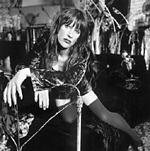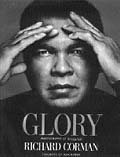DARBURY STENDERU WANTS to bring some color into your life. Yes, you, the one who wears black every day even though you think of yourself as so creative, so artistic, so different. Don’t worry, she doesn’t want to drape you in the pink and green of that most horrifying of recent trends, the return of the ’80s Preppie Handbook wardrobe. Stenderu’s handmade textiles, all some form of silk, glow with deep, vibrant hues set into one-of-a-kind designs. Every piece is silk-screened, printed, hand-painted, or some combination of the three. No two pieces are alike.
Not different enough for you? OK, there are no sizes. That’s right. You are welcomed into Stenderu’s eponymous shop on First Avenue by the charming and capable Ellaina. Every shop assistant, here and in the New York and San Francisco stores, can match your body type with a dress or shirt or pair of leggings without making you the least bit self-conscious. Stenderu honors the uniqueness of body types. She even makes her own mannequins: tall and short, wide hips with narrow shoulders and vice versa; there is even a pregnant mannequin.
This variety may account for her eclectic list of celebrity clients. Music people are well-represented, from rockers as dissimilar as James Brown, REM’s Peter Buck, and Sarah McLachlan to opera singer Dominique LaBelle and independent label guru Mitzi Johnson. Models and actresses, including Linda Evangelista, Whoopi Goldberg, and Drew Barrymore, are fans.
Walking into Stenderu’s world is like entering the cathedral at Chartres on a sunny day, when the rays come through the stained glass and spread rich reds and blues and purples at your feet. And, like a cathedral, it can be overwhelming.
“Sometimes people stand at the door for a while, awestruck,” Ellaina says. When I arrive on a cold afternoon her first words are, “You have to take off those gloves so you can feel things.”
Sensuality is the operative word here, from the body-skimming bias-cut of dresses to the sumptuous bedspreads, whose silk velvet is probably the softest thing on skin aside from someone else’s skin.
“I make clothes that reveal rather than clothe,” says Stenderu, though if your curves look suspiciously like bulges, there are beautiful shawls, hats, and gemlike evening bags, replete with beads and feathers.
Not everything hugs. Some pieces have universal appeal without being lifelessly “unisex.” While I’m there a man and woman both gravitate toward a men’s shirt.
“That would look great on you,” the woman says to her companion, only to have him reply, “I was about to say the same thing.”
Surprisingly, the prices aren’t as exotic as the wares. Metallic-star print pillows with tassels are $100. Men’s shirts, from kilim-print chiffon to silk noil, range from $200 to $380. Chairs, welded by Darbury’s brother and upholstered in her fabric, run $125 to $200. Mom knits wispy, neon head scarves for $36. Friends of Stenderu’s from the un-exotic locale of Yelm frame round mirrors in metal-studded wood. Another friend uses Stenderu’s material to create elaborate juju dolls, complete with hair, for $86.
Sure, the long dress with train is $1,200, but that’s six yards of the finest silk plus many hours of inspiration and labor. Other pricey items, and the highlights of the store, are the several floor-to-ceiling panels of fabric, for $1,500 each. Their patterns might be inspired by nature, as in the panel titled, “The Four Elements,” or by artists like Mario Fortuny, of Fortuny fabrics, and Salvador Dali (for whom Darbury’s dog is named).
While the store can feel like a hands-on museum, Ellaina and the other shop assistants are quick to welcome customers and make them feel comfortable. Stenderu tells the story of one young woman who came in looking for a prom dress, parents in tow. She fell so in love with a velvet topcoat that Stenderu gave her 10 percent off the $800 price tag. She still has the prom picture the girl gave her.
While there is no one client profile (she is equally proud of the scientists and professors who wear her clothes), Stenderu says her customers are “people who want to be fashionable but in their own way. These are not ‘everybody in Gap’ kind of people.”
They also tend to be devoted. A Seattle client who moved to San Francisco talked Stenderu into opening her space there five years ago, and even found the building for her. The New York store happened because another client said, “If you open a store in New York I’ll move there and run it for you,” Stenderu recalls. Her Greenwich Village location opened last summer.
For someone with such a following, Stenderu is modest, quiet, and even a little awkward—an endearing trait in people who look like Rita Hayworth. After a childhood in Mount Vernon, when, she says, “I was a social recluse” who dressed like a boy and spent all of her time reading, she dropped out of the UW to open her first store in Fremont (she moved to the Belltown location 10 years ago). Success came slowly.
“We always had just enough to make it another month,” she recalls.
It’s clear that Stenderu’s first love is the creative production, while the stores exist more to support the art habit than for any other reason.
The rooms in her modest South Seattle home are defined less by traditional monikers like “living room” or “dining room” than by which stage of the production process occurs there. Canvases and silk screens crowd the walls, tubs of dye line the porch, and fabric overflows from countless hampers on the floor.
Stenderu’s collaborator and friend, Carrie Houseman, points to three of these piles in turn.
“That’s New York, that’s Seattle, and that’s San Francisco.”
Stenderu jokes about the mess. “I read an article on how to tell if your neighbors are running a meth lab.” The criteria described her home studio perfectly. “No obvious signs of employment. Visible chemicals. Nasty smells.” Friends may come over at midnight with a bottle of wine and she’ll keep working after they leave, she says. “So people are coming and going and the lights are on at odd hours.” She grins. “I’m really not a meth lab!”
If the hub of several national stores is a little disorganized, it’s no problem for fellow artist Houseman, who has kept the business on track by managing all three stores, a role she handed off recently in order to concentrate on designing. While her style may be more architectural rather than “flowy,” all her pieces depend on Stenderu’s fabric and input.
Stenderu, in turn, is hoping to break into costuming for theater, dance, and opera while focusing on the large-scale textile panels and housewares for the stores. Last week she landed a commission with Pacific Northwest Ballet faculty member Sonia Dawkins for a performance at Seattle Central’s Broadway Performance Hall on March 25.
“I’m dressing seven men,” she says.
Men like her work. Some even wear the dresses. Stenderu’s New York store is right next to the historic Stonewall bar, “so every gay man in New York knows where I am,” she says. “I’ve made a lot of wedding dresses for gay couples.”
Another male fan is Stenderu’s current boyfriend, Nirvana alum Krist Novoselic, who recently bought one of her enormous panels for his farmhouse. He’s also picked up clothes for his mother and sister. Stenderu thinks she’s found the secret to their relationship.
“He’s a cheapskate,” she laughs. “He trades sexual favors for free stuff.”
We should all be so lucky.
Elizabeth Brinkley is a freelance writer in Seattle.






